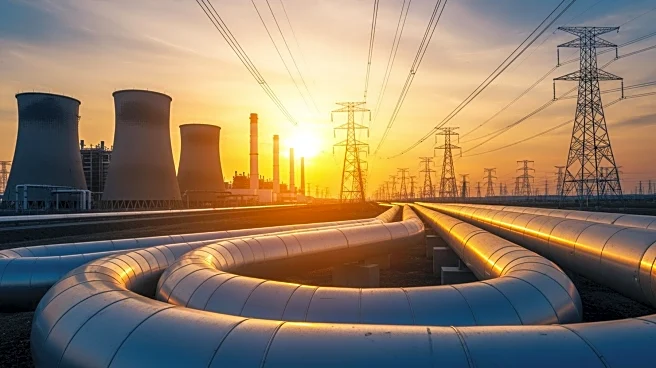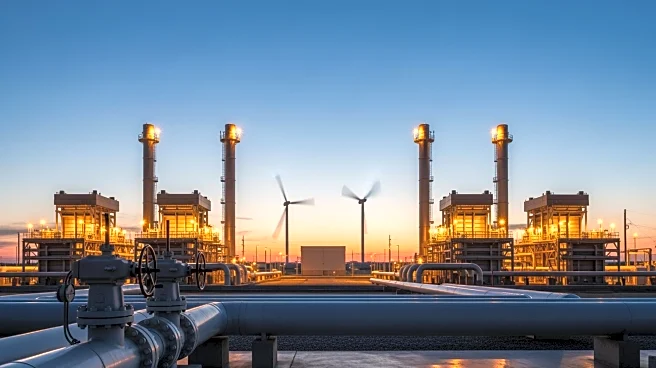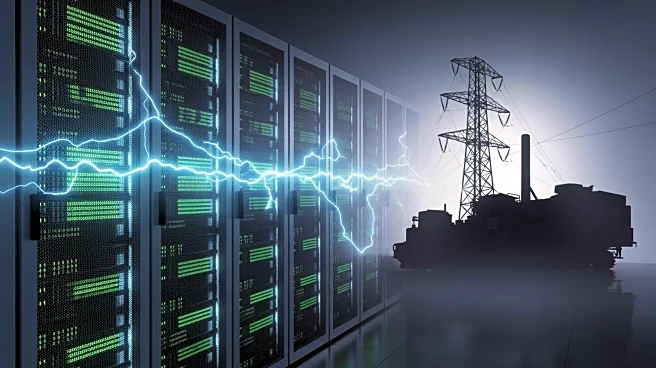What's Happening?
Energy Advisors has released a report highlighting the evolving role of midstream companies in the U.S. power sector. Traditionally known for transporting fuel, these companies are now becoming direct
contributors to power generation and grid stability. As electricity demand surges, midstream operators are expanding their capacity in deregulated markets and investing in power generation assets. This shift is driven by the increasing power demands of AI data centers, which could add up to 3.3 billion cubic feet per day of incremental load by 2030. Companies like Williams, Energy Transfer, Kinder Morgan, and Enbridge are allocating billions toward new or expanded gas-fired generation capacity. Additionally, there is a revival of coal-fired infrastructure, with sites being converted into gas-powered assets to support data-center reliability.
Why It's Important?
The expansion of midstream companies into power generation is significant for several reasons. It represents a strategic shift in the energy sector, where traditional fuel transporters are now playing a crucial role in meeting the nation's growing electricity needs. This development could enhance grid stability and support the increasing power demands of AI and data centers, which are vital for technological advancements. The investment in gas-fired generation capacity also aligns with the U.S.'s energy transition goals, as natural gas is considered a cleaner alternative to coal. Furthermore, the conversion of coal-fired infrastructure into gas-powered assets could facilitate a smoother transition to more sustainable energy sources, while leveraging existing transmission interconnects and infrastructure.
What's Next?
Midstream companies are expected to continue expanding their power generation capabilities, with significant investments planned for the coming years. Williams, for instance, has announced plans to invest $3 billion to enhance its gas-fired power generation capacity. The conversion of coal-fired sites into gas-powered assets is also likely to accelerate, with private equity entering the space to transform aging facilities. As these developments unfold, stakeholders in the energy sector, including policymakers and investors, will need to monitor the impact on energy markets and grid stability. The ongoing shift may also prompt regulatory changes to accommodate the evolving role of midstream companies in power generation.
Beyond the Headlines
The transformation of midstream companies into power generators could have broader implications for the U.S. energy landscape. It may lead to increased competition among energy providers, potentially driving innovation and efficiency in power generation. Additionally, the focus on gas-fired generation could influence the country's energy policy, particularly in terms of balancing environmental concerns with energy demands. The involvement of private equity in converting coal-fired infrastructure also highlights the growing interest in sustainable energy investments, which could shape future trends in the energy sector.











